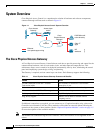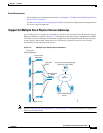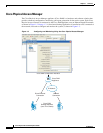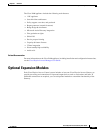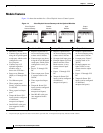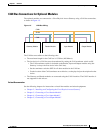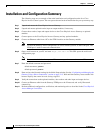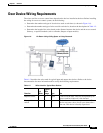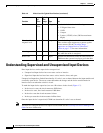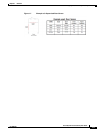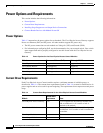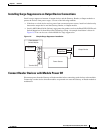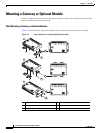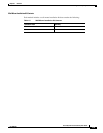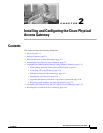
1-10
Cisco Physical Access Gateway User Guide
OL-20932-02
Chapter 1 Overview
Understanding Supervised and Unsupervised Input Devices
Understanding Supervised and Unsupervised Input Devices
Door input devices can be supervised or unsupervised
• Unsupervised input devices have two states: active or inactive.
• Supervised input devices have four states: active, inactive, short, and open.
Unsupervised inputs have limited functionality. If a wire is cut or shorted between the input module and
a normally open device. The server cannot determine the change and the device would remains in
inactive state even when the switch is closed.
To make the input device supervised, use two 1K resistors in the circuit (Figure 1-7).
• In the inactive state, the circuit measures 2000 ohms.
• In the active state, the circuit measures 1000 ohms.
• In the short state the circuit measures 0 ohms
• In the open state the circuit measures infinite ohms.
Once the input device is supervised, CPAM can determine if a wire is cut or shorted.
Note You must also configure the device as supervised in CPAM. See the Cisco Physical Access Manager User
Guide for more information.
Reader 6 per
reader
22 Wiegand A reader device includes the following:
• 2 Wiegand data wires
• 1 LED
• 1 beeper
• 2 power (12VDC) wires (500 feet maximum
length)
Electric strike or
magnetic lock
2 18 Output Opens the locking device. Include a reverse bias
diode or other surge suppressor to protect against
reverse current. See the “Installing Surge
Suppressors on Output Device Connections”
section on page 1-13 for more information.
Alarm bypass 2 22 Output Optionally used to turn off the alarm contact at the
door while the strike is energized.
Bell or call 2 22 Input Optional call button that creates an event to notify a
CPAM user that a person is trying to get in the door.
Table 1-2 Wires Used for Typical Door Devices (continued)
Function
# of
Wires
Typical
Wire
Gauge Type Use



